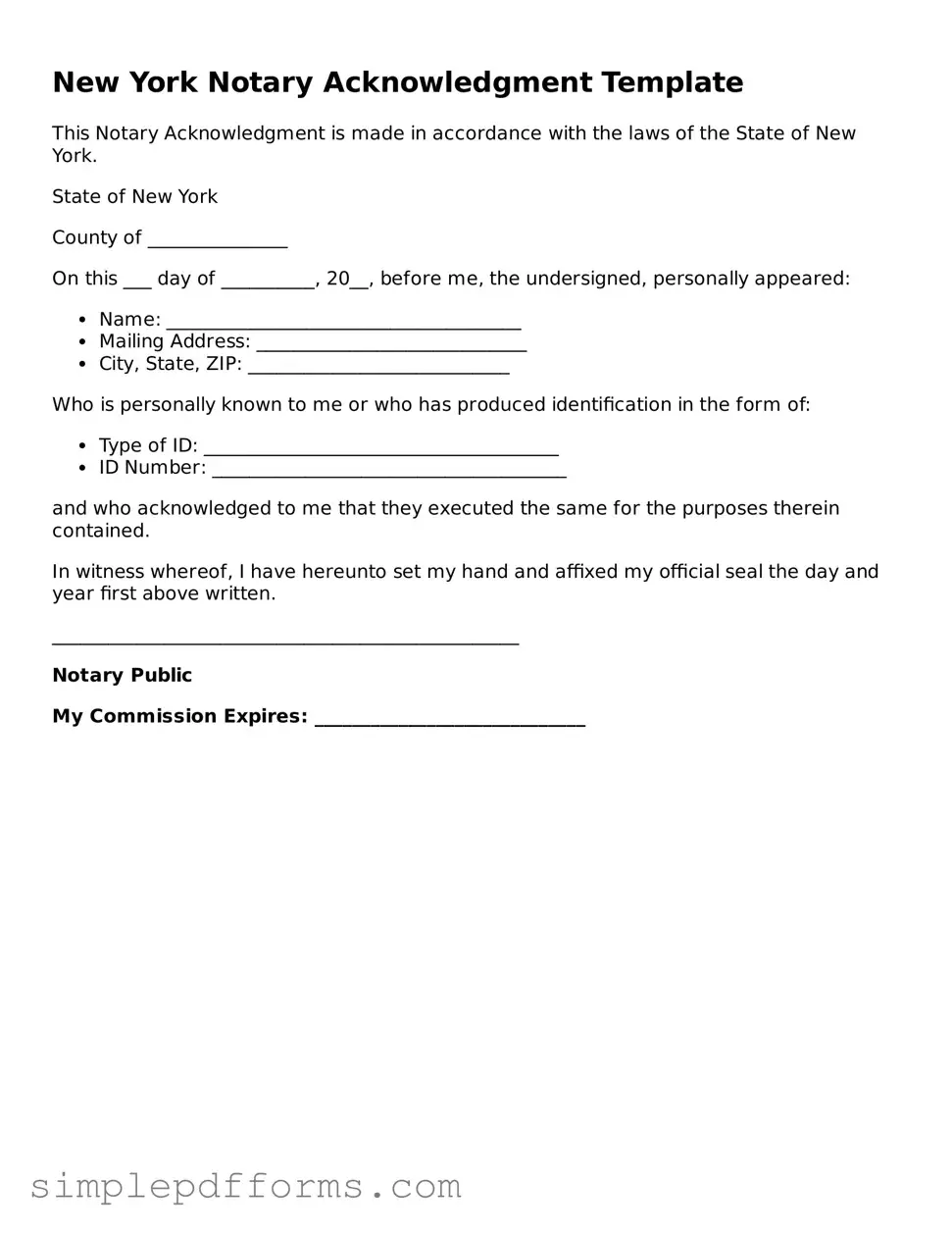Attorney-Verified Notary Acknowledgement Document for New York State
The New York Notary Acknowledgement form is a legal document that serves to confirm the identity of a signer and the voluntary nature of their signature. This form is essential for ensuring the authenticity of various transactions, including property transfers and legal agreements. By utilizing this form, individuals can protect their interests and provide a clear record of their intentions.
Open Notary Acknowledgement Editor Now
